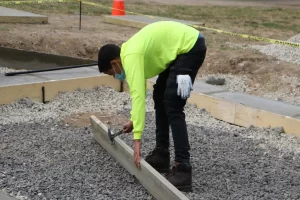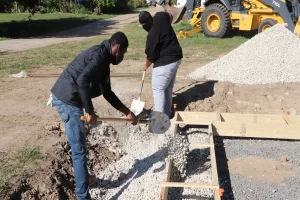Several people have made their careers in construction. Although construction has been a vital industry for thousands of years, construction safety is a relatively new and evolving concept. The reality is that most construction job sites are hazardous, and workplace safety has to be a top priority. Here we will give you a basic understanding of construction job safety and how to train a smarter institution to boost safe production.
As the name indicates, construction safety involves implementing regulations, rules, and safeguards at construction sites to protect employees from injury and harm. There are numerous hazards that could cause severe injury or death unless the proper precautions are taken.
The OSHA (Occupational Safety and Health Administration) recommends that all construction workers undergo a minimum ten-hour safety training course. They define construction employees as those who work for alteration, construction, or repair, including painting and decorating. Through OSHA’s training program, all construction employees can receive a ten-hour training, with managers or supervisors working for an additional twenty hours. These courses emphasize primarily what OSHA has specified as “the focus four,” which are those hazards most probable to result in injury on a job site, including:
Other precise construction safety training can be tailored to your enterprise and may include the following:
Safety glasses for welding, cutting, or nailing, foot protection, puncture-resistant work boots, and safety-toed footwear to prevent harm from falling objects. Hand protection with gloves for specific jobs, like rubber gloves for concrete work, insulated gloves, and welding gloves for electrical dangers. Head protection with hard hats to be worn at all times.
Power must be shut off when any electrical job is being done, and all circuits should have an adequate lockout system. In addition, any broken cords or cables need to be replaced, all tools and equipment should be adequately maintained, and electrical power lines should be at least ten feet from scaffolds, ladders, equipment, and materials.
Adequate signage should be posted stating surface load capacity and should be prepared with guardrails. In addition, the entries must have handrails, and all piles must be stacked to prevent falling, tripping, collapsing, or rolling.
A list of all dangerous materials used in the construction site should be documented along with a written communication program as per the proper labeling and training. In addition, each container of dangerous substances should be properly labeled.

All floor and wall openings must be securely wrapped or have a guardrail. In addition, toe boards must be installed around the edges of floor openings.
All scaffolds should have adequate footing, be fully planked, and be free from any dangers that could cause falls or slips. Employees should not be allowed on scaffolds during severe weather conditions and should be loaded with only what they are developed to support.
Only properly trained/licensed forklift truck operators are allowed to use this equipment. Operators should be provided refresher training and evaluations. In addition, forklifts should undergo routine inspection and meet design and construction requirements.
Although OSHA’s construction training is not needed, OSHA does require some level of activity in each enterprise. It is best to consult OSHA’s construction safety training prerequisites directly. Additionally, check with regional and state governments to ensure you are formulating a construction safety plan that fulfills your local standards. It’s also significant to note that everyone in every enterprise will need some basic safety training in the workplace. The objective is to give workers the support they need to safely conduct their job. Some enterprises require minimal safety training, while others require in-depth training at various levels.
For years, the OSHA (Occupational Safety and Health Administration) has mandated construction employers to deliver safety and health training for their workers. And with the following advantages offered by regular, up-to-date construction training program, OSHA’s mandate is easy to understand.

Sometimes, communication is impeded by a lack of understanding. So when employees of the construction workforce are uniformly trained, they will be better able to formulate action plans, make rapid, informed decisions, and keep each other secure and safe.
One of the biggest benefits of a regular safety construction course is that it boosts participants’ understanding of workplace hazards. Before starting their workday, construction employees must be fully conscious of the hazards presented by their job locations. Through regular construction safety training, they can better anticipate particular workplace dangers, paving the way for risk avoidance and prevention.
Construction safety training continues beyond hazard prevention. Contrarily, it also covers what to do if an accident or injury occurs. In addition, as OSHA grants, employers are accountable for keeping accurate records of illnesses, injuries, and fatalities on the job. It ensures compliance with all relevant standards and makes it easier to see where your health and safety program may need updates or additional material.
Read More